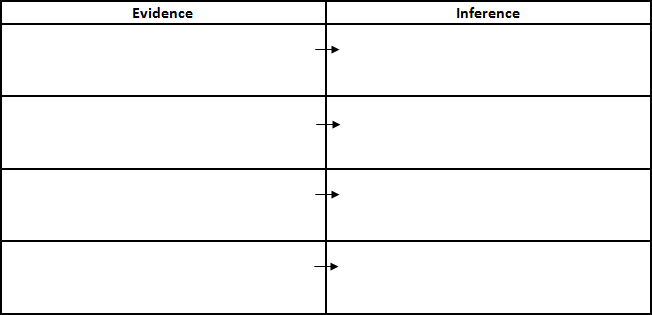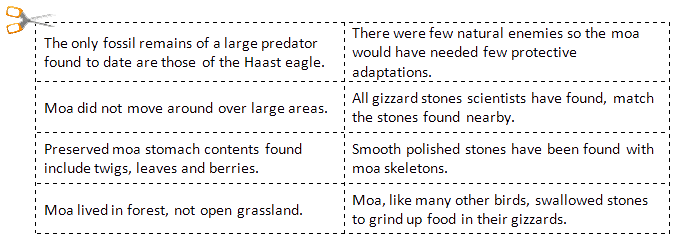Moa - evidence or inference?
This task is about the difference between evidence and inference.
|
Scientists think that moa lived very successfully in New Zealand for many hundreds of thousands of years and became extinct some time after the arrival of people. What we know about the moa comes mainly from scientists who look carefully for evidence and then use that to make inferences about what moa looked like and how they behaved.
Evidence is something that you can see or measure. |
|
a) In your group sort the statements on cards into those that are evidence and those that are inferences. Match each inference card to its appropriate evidence card, and place them below.

Cut out the statements below, discuss in your group and put them in the table above.

| b) | i) |
Using the information from the cards, show a likely food chain for the moa before the arrival of people in New Zealand.
|
|
|
|||
|
ii)
|
What evidence did you base your ideas on?
|
||
| c) |
Why do you think the moa became extinct after the arrival of people?
Give as many reasons as you can.
|
||



